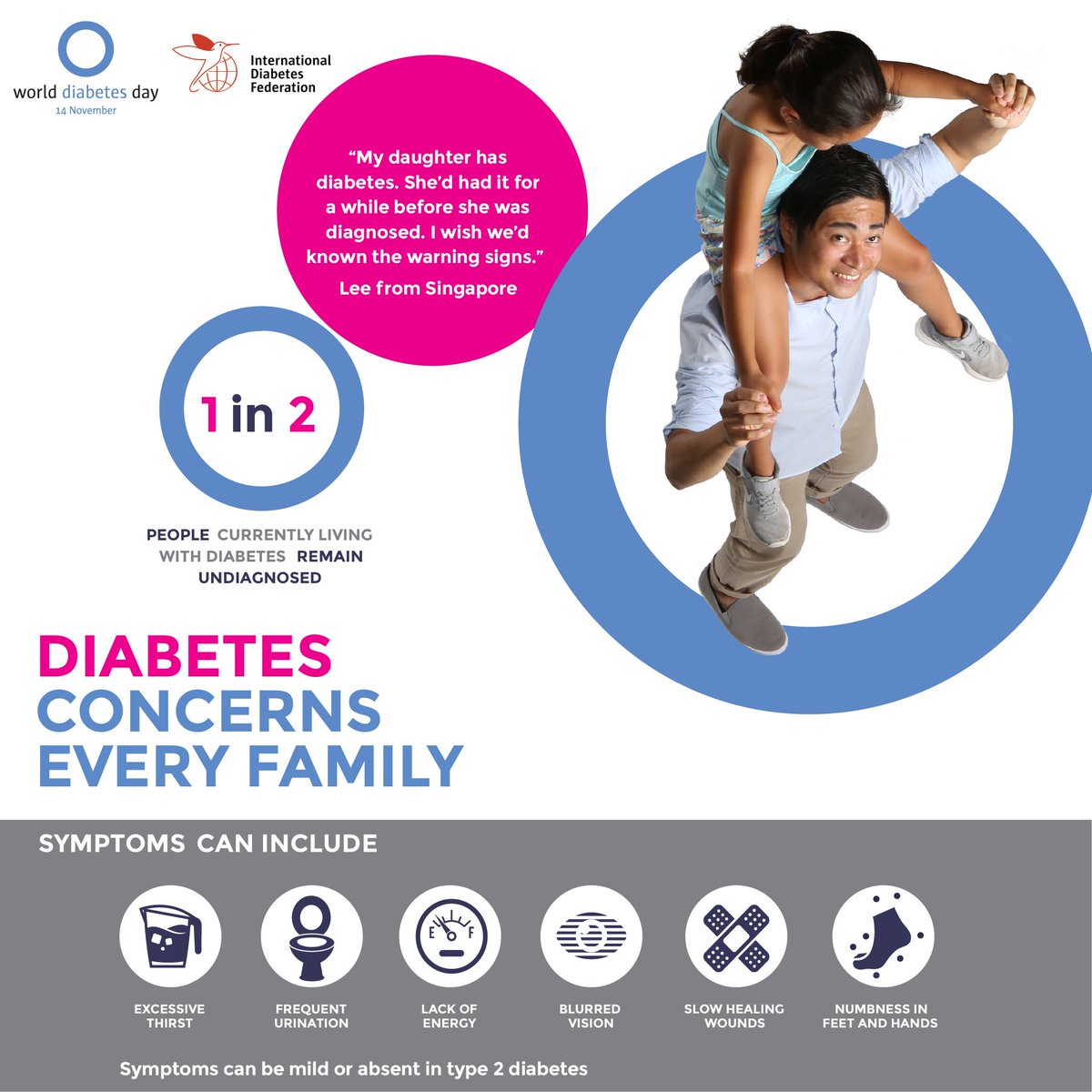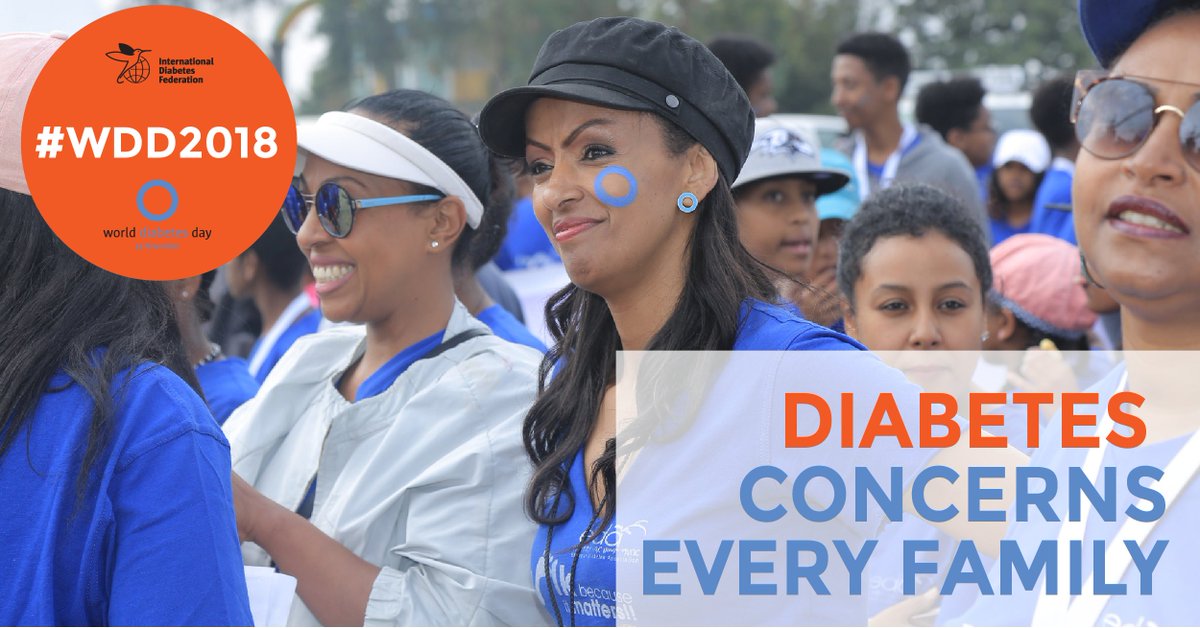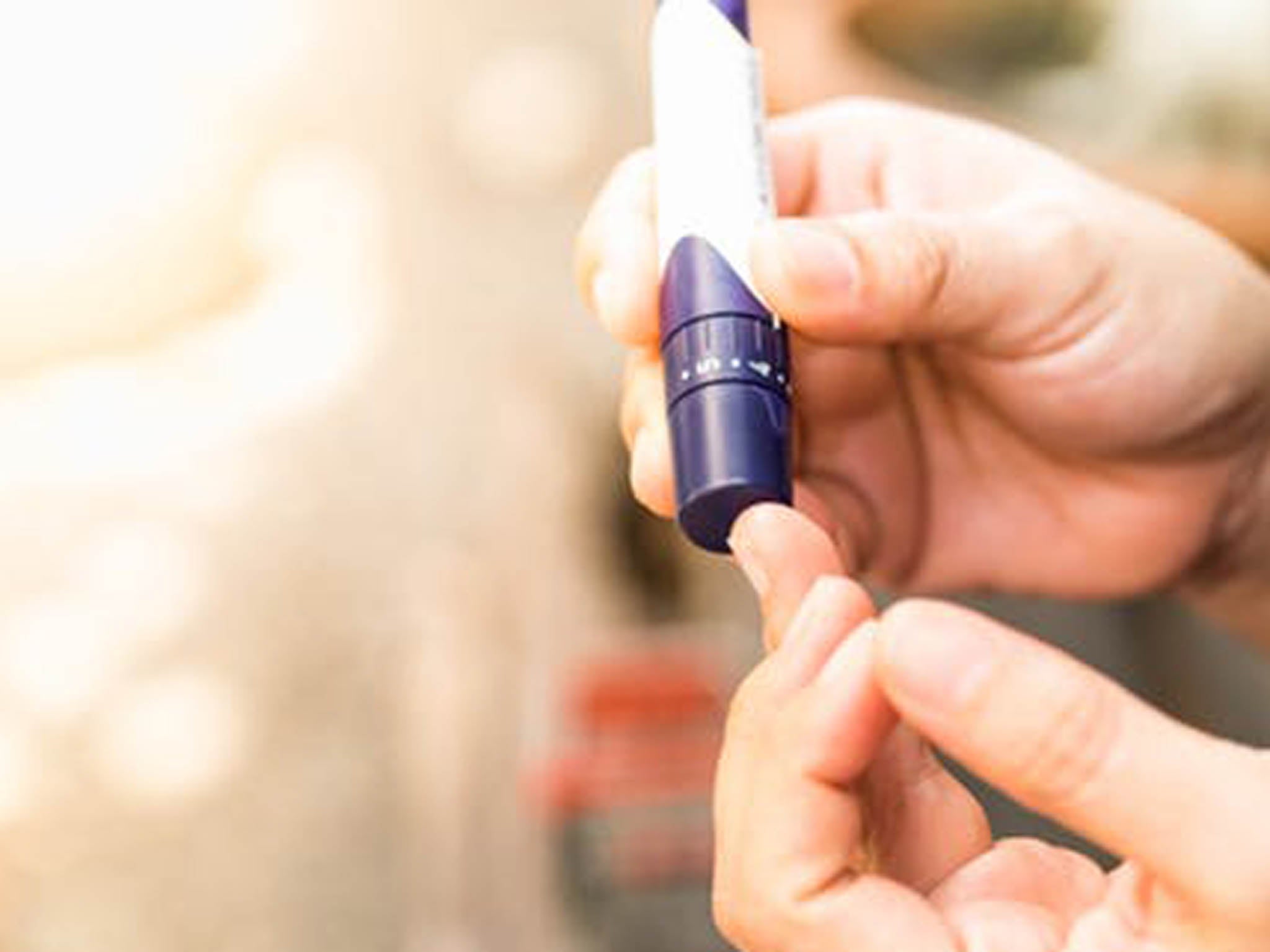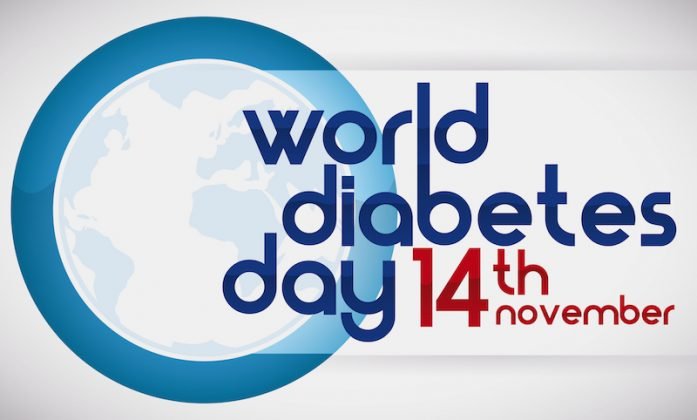November 14th every year is designated World Diabetes Day, dedicated to diabetes campaign all around the world. Led by the International Diabetes Federation (IDF), World Diabetes Day was created in 1991 by IDF and the World Health Organization in response to growing concerns about the escalating health threat posed by diabetes.
World Diabetes Day became an official United Nations Day in 2006 with the passage of United Nation Resolution 61/225.
Globally, more than 425 million people live with diabetes. That means more than 425 million families live with diabetes, too. In Nigeria the number is estimated to be well above 5 million.
What is Diabetes?
 Diabetes is a chronic disease that occurs either when the pancreas does not produce enough insulin or when the body cannot effectively use the insulin it produces. Insulin is a hormone that regulates blood sugar. Hyperglycaemia, or raised blood sugar, is a common effect of uncontrolled diabetes and over time leads to serious damage to many of the body’s systems, especially the nerves and blood vessels.
Diabetes is a chronic disease that occurs either when the pancreas does not produce enough insulin or when the body cannot effectively use the insulin it produces. Insulin is a hormone that regulates blood sugar. Hyperglycaemia, or raised blood sugar, is a common effect of uncontrolled diabetes and over time leads to serious damage to many of the body’s systems, especially the nerves and blood vessels.
The disease often takes a financial and emotional toll on everyone involved because successful treatment often requires frequent access to a variety of healthcare professionals. Because early detection is key to preventing complications and improving outcomes, World Diabetes Day is dedicated to making sure families and caregivers alike know the signs, symptoms and risk factors of this rapidly growing epidemic.
Type 1 diabetes
Type 1 diabetes, (previously known as insulin-dependent, juvenile or childhood-onset), is characterized by deficient insulin production and requires daily administration of insulin. The cause of Type 1 diabetes is not known and is not preventable with current knowledge. Symptoms may include; excessive excretion of urine (polyuria), thirst (polydipsia), constant hunger, weight loss, vision changes, and fatigue. These symptoms may occur suddenly.
Type 2 diabetes
Type 2 diabetes, (formerly called non-insulin-dependent, or adult-onset), results from the body’s ineffective use of insulin. Type 2 diabetes affects the vast majority of people with diabetes around the world, and is largely the result of excess body weight and physical inactivity. Symptoms may be similar to those of Type 1, but are often less marked. As a result, the disease may be diagnosed several years later after complications had already set in.
Until recently, this type of diabetes was seen only in adults but is now also increasingly occurring in children.
There are other categories of diabetes such Impaired Glucose Tolerance (IGT) and Impaired Fasting Glycaemia (IFG), which are intermediate conditions in the transition between normality and diabetes, and Gestational diabetes which afflicts primarily pregnant women.
Family Support Is Critical to Improving Health Outcomes

Common consequences of diabetes?
Over time, diabetes can damage the heart, blood vessels, eyes, kidneys, and nerves.
-
Adults with diabetes have a two- to three-fold increased risk of heart attacks and strokes.
-
Combined with reduced blood flow, neuropathy (nerve damage) in the feet increases the chance of foot ulcers, infection and eventual need for limb amputation.
-
Diabetic retinopathy is an important cause of blindness, and occurs as a result of long-term accumulated damage to the small blood vessels in the retina. 2.6% of global blindness can be attributed to diabetes.
-
Diabetes is among the leading causes of kidney failure.
How can the burden of diabetes be reduced?

Prevention
Simple lifestyle measures have been shown to be effective in preventing or delaying the onset of Type 2 diabetes. To help prevent type 2 diabetes and its complications, people should:
-
achieve and maintain healthy body weight;
-
be physically active – at least 30 minutes of regular, moderate-intensity activity on most days. More activity is required for weight control;
-
eat a healthy diet, avoiding sugar and saturated fats intake; and
-
avoid tobacco use – smoking increases the risk of diabetes and cardiovascular diseases.
Diagnosis and treatment
Early diagnosis can be accomplished through relatively inexpensive testing of blood sugar.
Treatment of diabetes involves diet and physical activity along with lowering blood glucose and the levels of other known risk factors that damage blood vessels. Tobacco use cessation is also important to avoid complications.
Interventions that are both cost-saving and feasible in developing countries include:
-
blood glucose control, particularly in type 1 diabetes. People with type 1 diabetes require insulin, people with type 2 diabetes can be treated with oral medication, but may also require insulin;
-
blood pressure control; and
-
foot care.
Other cost saving interventions include:
-
screening and treatment for retinopathy (which causes blindness)
-
blood lipid control (to regulate cholesterol levels)
-
screening for early signs of diabetes-related kidney disease and treatment.

W.H.O’s Response
-
provides scientific guidelines for the prevention of major noncommunicable diseases including diabetes;
-
develops norms and standards for diabetes diagnosis and care;
-
builds awareness on the global epidemic of diabetes, marking World Diabetes Day (14 November); and
-
conducts surveillance of diabetes and its risk factors.
The WHO “Global report on diabetes” provides an overview of the diabetes burden, the interventions available to prevent and manage diabetes, and recommendations for governments, individuals, the civil society and the private sector.
The WHO “Global strategy on diet, physical activity and health” complements WHO’s diabetes work by focusing on population-wide approaches to promote healthy diet and regular physical activity, thereby reducing the growing global problem of overweight people and obesity.
RAPID DIAGNOSTIC SOLUTIONS TO HELP YOU FIGHT DIABETES
Patient non-compliance and missed appointments lead to poor testing and therapy adherence.
On World Diabetes Day 2018, WHO joins partners around the world to highlight the impact diabetes has on families and the role of family members in supporting prevention, early diagnosis and good management of diabetes. More than 400 million people live with diabetes worldwide, and the prevalence is predicted to continue rising if current trends prevail. Diabetes is a major cause of premature dying, blindness, kidney failure, heart attack, stroke and lower limb amputation. It was the seventh leading cause of death in 2016.
Besides the economic burden on the health-care system and national economy, diabetes can impose a large economic burden on people with diabetes and their families in terms of higher out-of-pocket health-care payments and loss of family income associated with disability, premature death, and caring for disabled family members. Expenditure on medications and treatments are a major source of household expenditure on diabetes healthcare.
The complications of diabetes can be avoided or delayed with medication, regular screening and treatment for complications Although diabetes can be managed with generic medicines, expenditure on the more expensive branded, patented medicines is increasing. Their price is in large disproportion with what we know about their health benefits. Because of the potential to incur catastrophic personal expenditures in people without financial protection, both patients and policy-makers need to be aware of the health impact which can be expected with their use. WHO guidelines on the selection of medicines for the control of blood glucose recommend the use of generic medicines and human insulin.
Established in 1991 by the International Diabetes Federation with support from WHO in response to growing concerns about the health and economic threat posed by diabetes, World Diabetes Day became an official UN day in 2006. The World Diabetes Day 2018 campaign promotes universal health coverage for affordable and equitable access to diabetes management, including improving the knowledge and capacities of people with diabetes and their families to take charge of their own care, to reduce economic hardship in households which have few strategies for coping with the economic burden of diabetes.
Changes to diet rich in vegetables and nuts can be helpful in slowing down diabetes.
Here’s everything you need to know:
How can diabetes be treated?
If a person is diabetic, then it’s essential that they do all that they can to manage their blood sugar levels.
They can do this by reducing the amount of sugar that they consume and by including healthy foods such as fresh fruits, vegetables, fish, nuts and high-fibre cereals in their diets.
Maintaining an active lifestyle and carrying out regular blood tests to keep an eye on blood sugar levels is highly recommended.
People who’ve been diagnosed with type 2 diabetes may need to take medication in order to reduce the amount of glucose in their blood.
Those who’ve been diagnosed with type 1 diabetes must treat the condition with insulin injections or pumps every day.
The type and quantity of insulin that you need is a matter that you can discuss with a medical professional.
Can diabetes be reversed?
People with type 2 diabetes can effectively “reverse” their condition by eliminating junk food, refined sugar and processed food from his diet and increase physical activity and exercising such as cycling, boxing and weightlifting.
Lifestyle changes have been seen to send diabetes into “remission”.
If you have type 2 diabetes and you’re on medication that you think you no longer need, seek the advice of a medical professional.
















